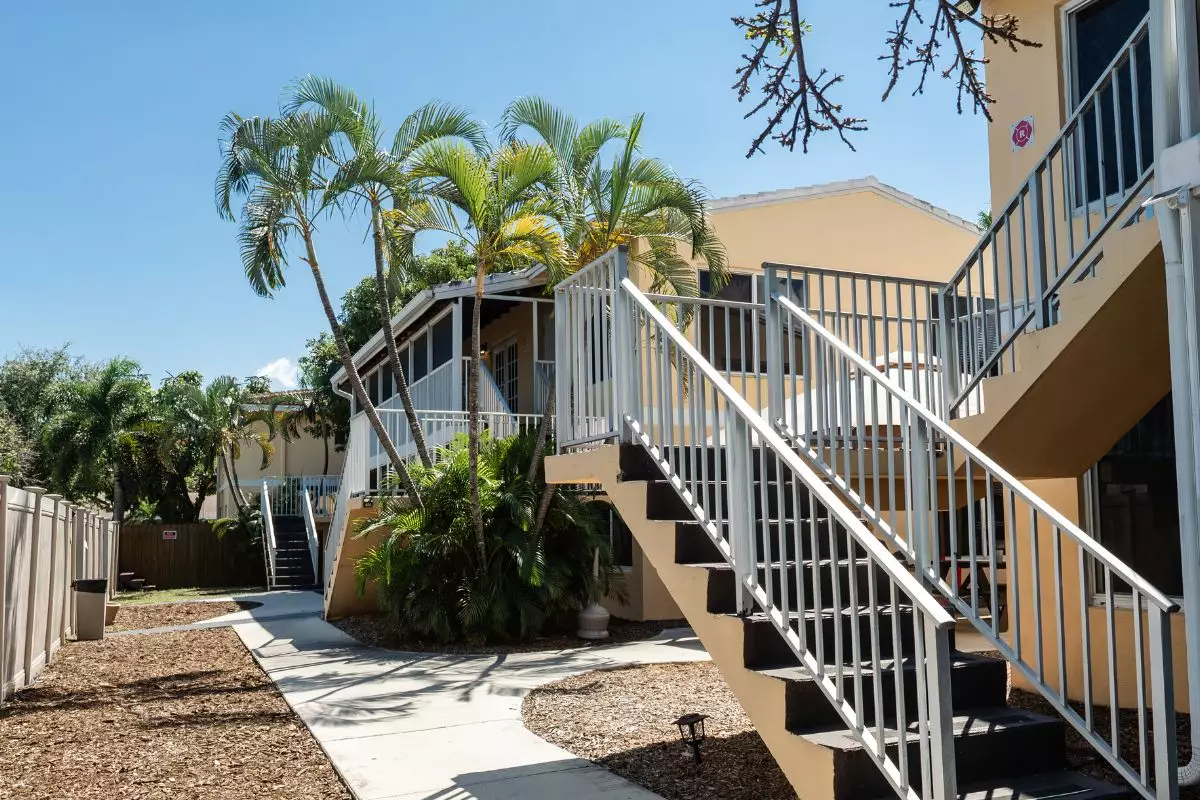For individuals living with serious mental illness, healing is not always a straight path. Mental health recovery takes time, compassionate support, and the right environment. When symptoms become persistent, complex, or unmanageable with traditional outpatient care, a long-term psychiatric facility can be the life-changing step that provides hope and healing.
In today’s mental health landscape, residential treatment is increasingly recognized as the gold standard for individuals whose mental health needs exceed what short-term programs or community-based support can provide.
This article explores the vital role that residential mental health care plays in supporting recovery and helping individuals develop the necessary skills to lead meaningful lives.
Understanding the Need for Long-Term Mental Health Care
Mental health conditions can range from moderate to severe. When conditions such as bipolar disorder, treatment-resistant depression, eating disorders, trauma-related disorders, or co-occurring disorders persist over time, individuals may need more than outpatient therapy or medication management.
Long-term residential treatment offers a structured and immersive environment where clients can receive continuous psychiatric care, intensive therapeutic services, and life skills training. These residential treatment programs are designed for individuals who struggle to function independently due to the severity of their mental illness.
What Are Psychiatric Residential Treatment Facilities?
Psychiatric residential treatment facilities (PRTFs) are live-in settings that provide 24/7 supervision, individualized treatment plans, and multidisciplinary care. These facilities support individuals with a variety of psychiatric disorders, including substance abuse, complex trauma, and co-occurring mental health and medical conditions.
In a PRTF, residents live in a therapeutic community with others experiencing similar challenges. This setup encourages peer support, enhances personal insight, and fosters personal growth. Most importantly, it creates the safety and consistency needed for deep, lasting recovery.
The Benefits of Residential Mental Health Treatment
A comprehensive residential care setting offers a variety of services and treatment approaches that are difficult to replicate in outpatient or short-term hospital environments.
Here is an overview of the key benefits of long-term inpatient care.
Intensive Psychiatric Care
Long-term psychiatric care involves continuous assessment and adjustment of treatment strategies. Licensed clinicians, psychiatrists, and therapists work together to monitor symptoms, manage medications, and adapt interventions as clients progress.
Structured Daily Programming
Daily routines provide consistency and predictability, which help regulate emotional responses and reduce distress. Programming typically includes individual therapy, group therapy, family counseling, and skills-based workshops.
Medication Management
Many residents require ongoing medication management as part of their treatment program. In residential settings, medication is closely monitored to ensure effectiveness and minimize side effects.
Skill Building and Education
Clients learn new skills essential for daily living, such as managing finances, cooking, communication, and conflict resolution. Educational services are also provided for adolescents to support their academic growth alongside mental health recovery.
Community and Connection
A healing community is central to long-term care. Peer relationships, group homes, and shared experiences foster emotional connection, reduce isolation, and promote a sense of belonging.
Who Can Benefit from Long-Term Residential Treatment?
Long-term mental health care is appropriate for both adults and adolescents facing persistent mental health symptoms that impair daily functioning and those with a history of frequent hospital admissions without sustainable progress.
Inpatient care might be appropriate for people with diagnoses such as treatment-resistant depression, bipolar disorder, or eating disorders, as well as those with co-existing substance abuse and psychiatric disorders.
This level of care can also benefit individuals with histories of complex trauma or family instability, and those with an inability to manage medication or adhere to outpatient treatment plans.
Whether the issue stems from co-occurring disorders or chronic emotional dysregulation, residential programs offer the care needed for long-term stabilization.
Levels of Care Within Residential Treatment Facilities
Not all residential treatment facilities are the same. Reputable treatment centers offer different levels of care to meet clients where they are in their journey.
These levels may include:
- Inpatient care: For acute crisis stabilization
- Intensive residential care: For individuals needing high-level, long-term support
- Step-down residential programs: As clients improve, they move toward more independence
- Outpatient care: For those transitioning back into their communities with ongoing support
Such long-term care ensures that individuals receive the services and supervision that match their evolving mental health needs.
Core Components of Effective Residential Programs
The most successful treatment facilities share common elements that support sustainable recovery. Here is an overview of what components set this level of care apart from the rest.
Personalized Treatment Plans
No two individuals are the same. Effective programs tailor each treatment plan to the person’s history, diagnosis, and goals.
Evidence-Based Therapies
Residents engage in proven modalities such as Cognitive Behavioral Therapy (CBT), Dialectical Behavior Therapy (DBT), and trauma-focused interventions.
Family Involvement
Healing is most successful when families are engaged. Family counseling helps improve communication, rebuild trust, and equip loved ones to provide support post-treatment.
Focus on Life After Treatment
Discharge planning starts early. Programs help clients develop skills, set goals, and prepare to return home or transition to outpatient care with confidence.
Preparing for Admission: What to Expect
Admitting a loved one—or oneself—to a long-term psychiatric facility can be overwhelming. It’s important to know what to expect.
The admission process might include:
- A comprehensive assessment will be conducted to determine the appropriate level of care
- A personalized treatment plan will be developed
- A team of clinicians, psychiatrists, and support staff will coordinate care
- Length of stay varies, often determined by the severity of symptoms and response to treatment
The goal is not just stabilization but lasting recovery and the ability to function independently with meaning and purpose.
Accreditation and Quality of Care
When evaluating residential mental health programs, look for accreditation from the Joint Commission or a similar accrediting body. Accreditation ensures the facility meets rigorous safety and quality standards.
Equally important is the facility’s philosophy: Do they treat clients with dignity? Is there an emphasis on personal growth, skill-building, and long-term wellness? Do they support families throughout the process?
The more you know about your treatment facility, the more confident you can feel in seeking treatment. Ask questions, look for accreditation, and research the center before starting treatment, if possible.
Get Help Now
Mental health conditions do not define a person, and with the right support, individuals can rebuild their lives. Residential treatment is more than a place to stabilize—it is a space where individuals reclaim their identity, gain new skills, and envision a life beyond illness.
If you or a loved one is facing a serious mental illness, don’t wait. Reach out to the team at First Step Behavioral Health to learn about our treatment plans or to schedule an intake appointment. Find the treatment programs, recovery support resources, and information about managing mental health by contacting our team today.
Frequently Asked Questions (FAQ)
1. How long do people typically stay in a long-term psychiatric facility?
Stays can range from several months to over a year, depending on the individual’s diagnosis, progress, and specific treatment goals. Length of stay is determined through ongoing assessment by the clinical team, with input from the patient and family. The aim is to provide enough time for meaningful change, not just symptom stabilization.
2. What is the difference between long-term residential treatment and a psychiatric hospital?
Psychiatric hospitals focus on short-term crisis stabilization, typically lasting a few days to a few weeks. In contrast, long-term residential treatment offers ongoing therapeutic services in a less restrictive, home-like setting. The emphasis is on rehabilitation, building coping strategies, and long-term recovery.
3. Are educational or vocational services available in residential programs?
Yes, many residential treatment centers—especially those for adolescents and young adults—offer on-site educational services or partner with local schools and tutors. For adults, some programs incorporate job readiness training, resume building, and vocational assessments as part of recovery.
4. Can individuals with co-occurring substance use disorders receive treatment in these facilities?
Absolutely. Many residential facilities are equipped to treat co-occurring disorders, meaning mental health conditions that occur alongside substance abuse. Integrated care is essential for long-term recovery, and programs often include relapse prevention planning and substance use counseling.
5. What happens after someone completes long-term residential treatment?
A structured aftercare plan is created before discharge. This might include outpatient care, group therapy, ongoing medication management, and support from local community resources. Some individuals transition to step-down programs or group homes to gradually increase independence.
6. Is family involvement required during treatment?
While not always required, family participation is strongly encouraged. Involvement can include family therapy sessions, educational workshops, and regular communication with the care team. Engaged families often provide stronger support systems after discharge, contributing to better long-term outcomes.
Sources
Jump to a Section
Call (855) 425-4846
